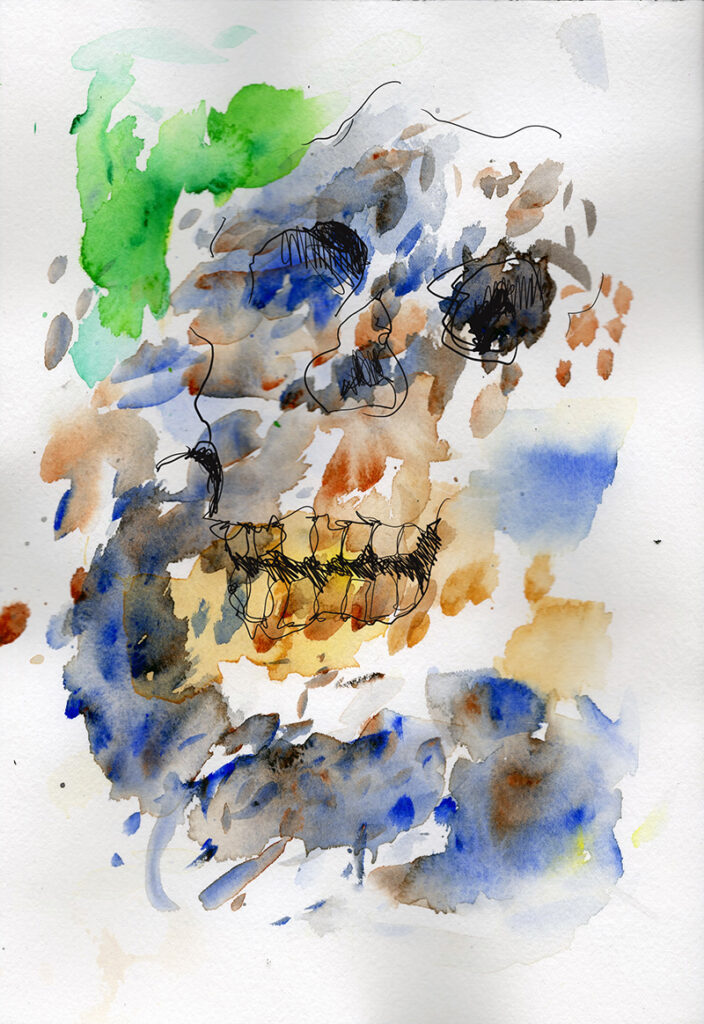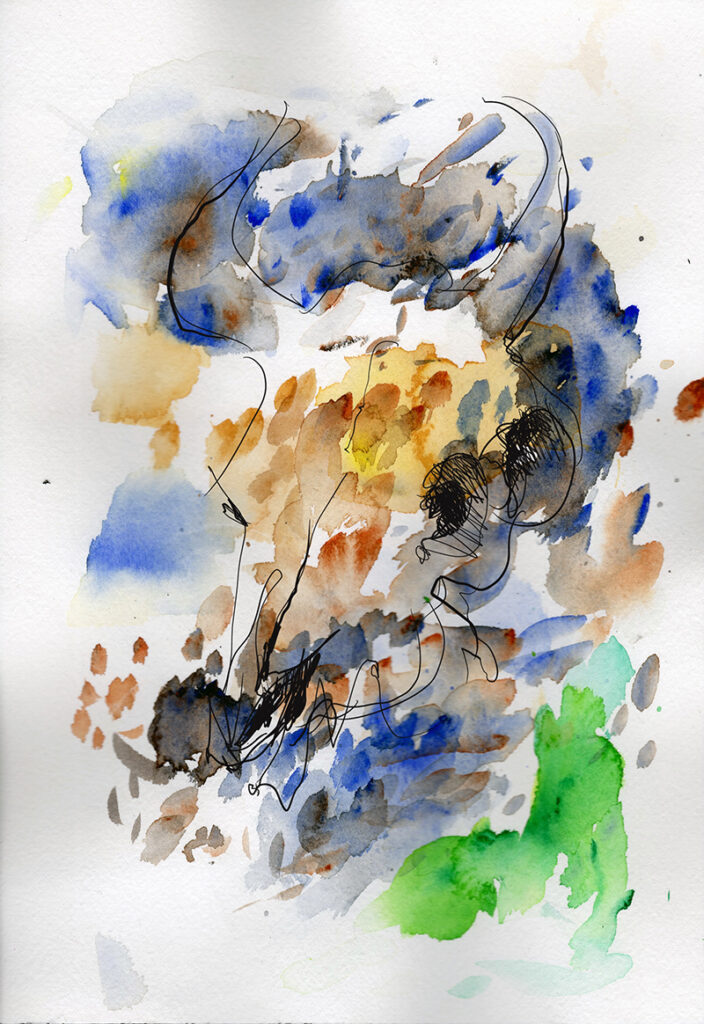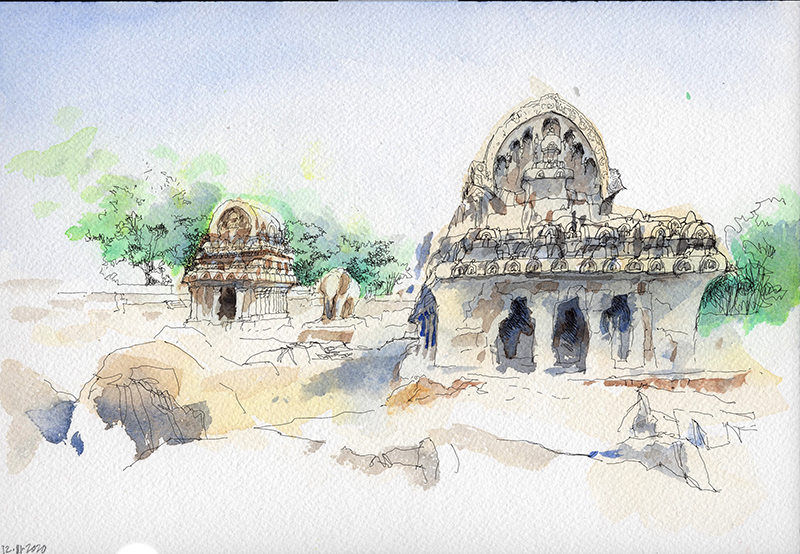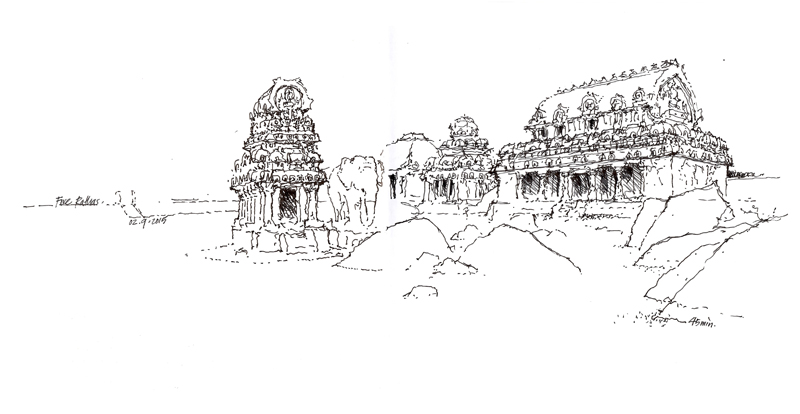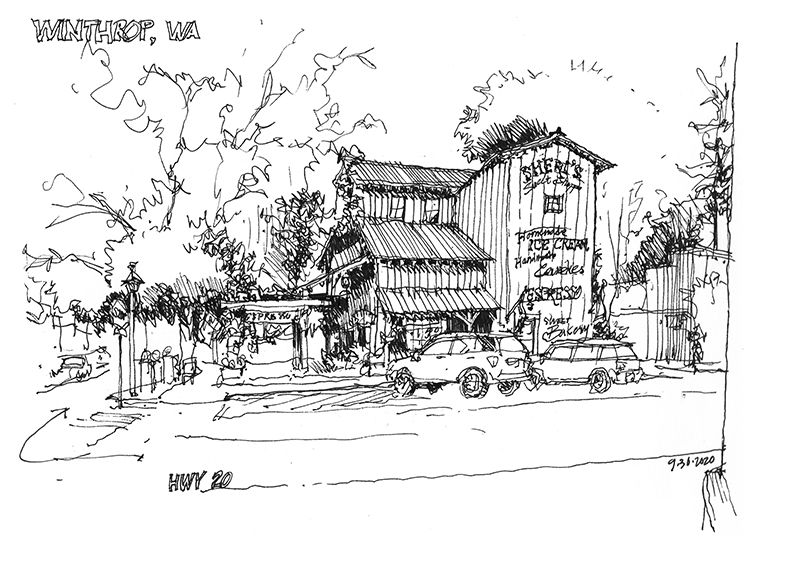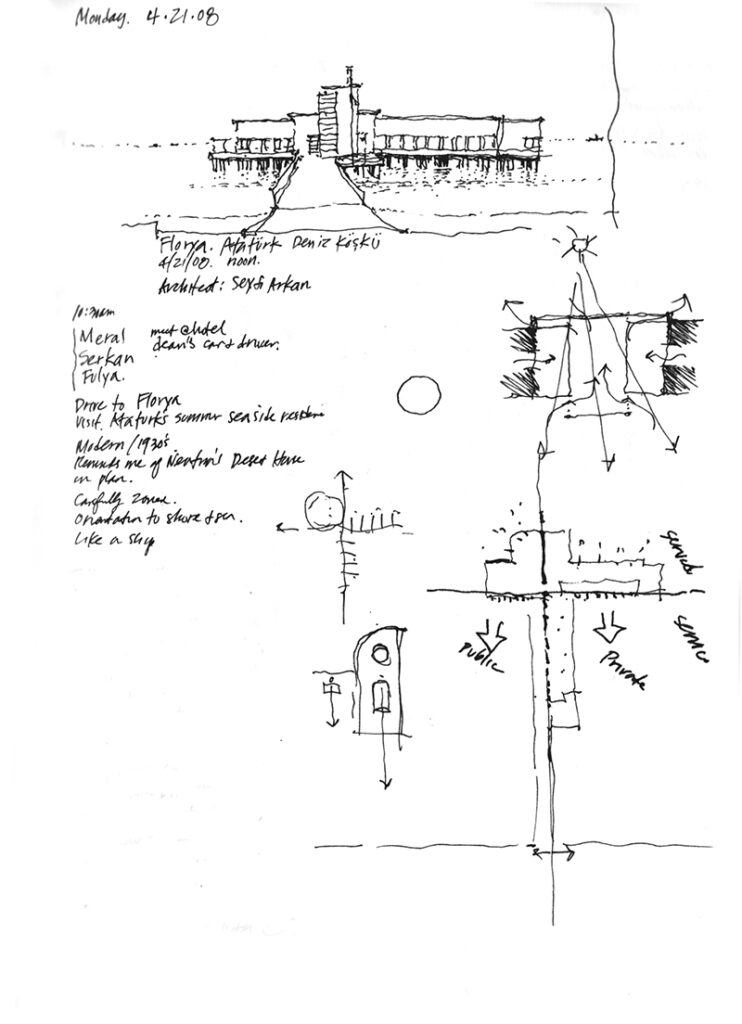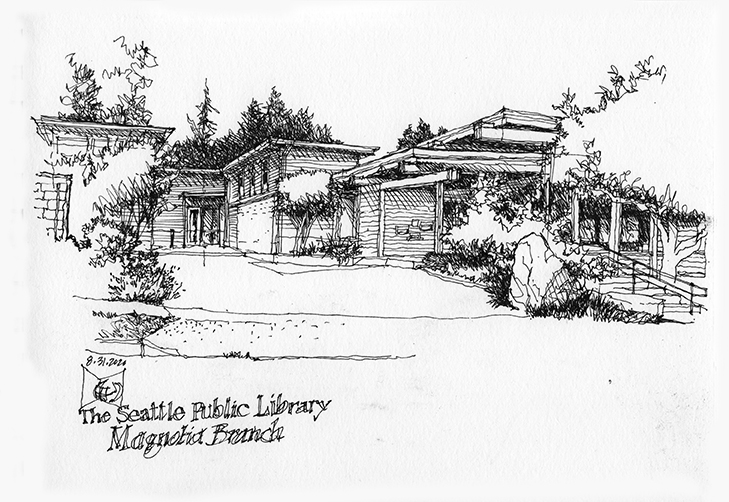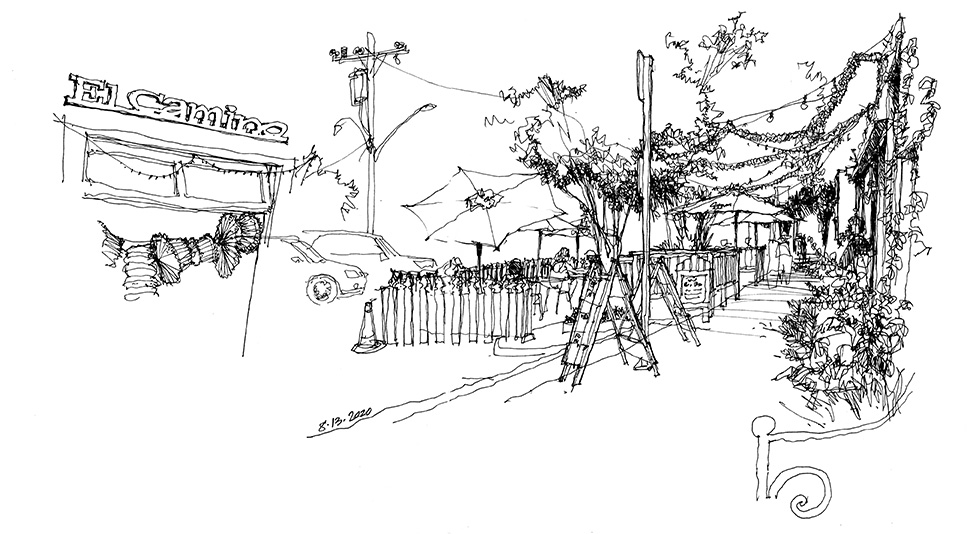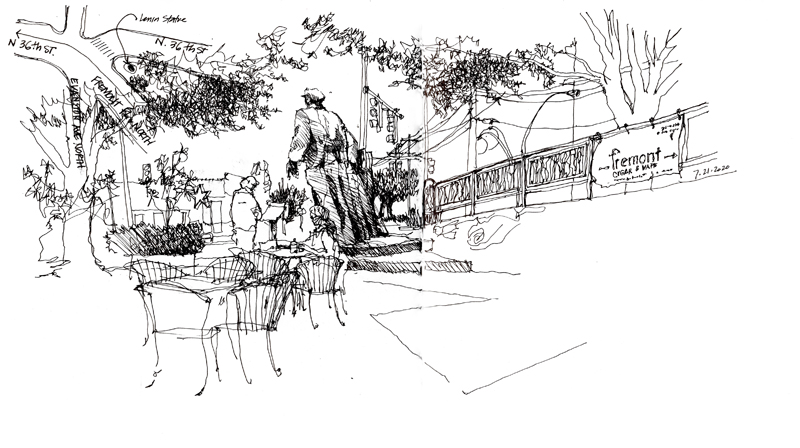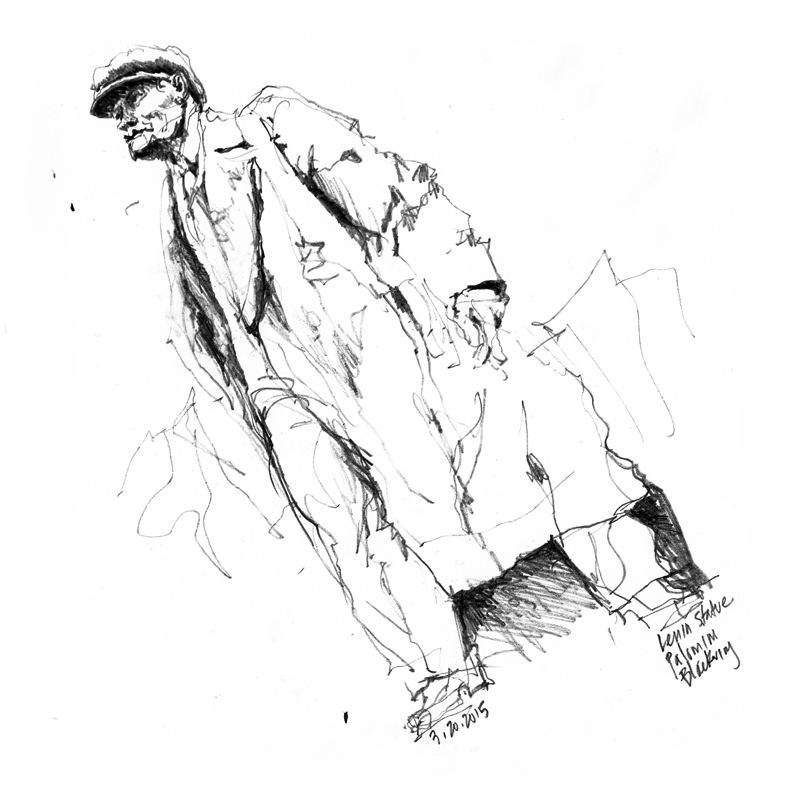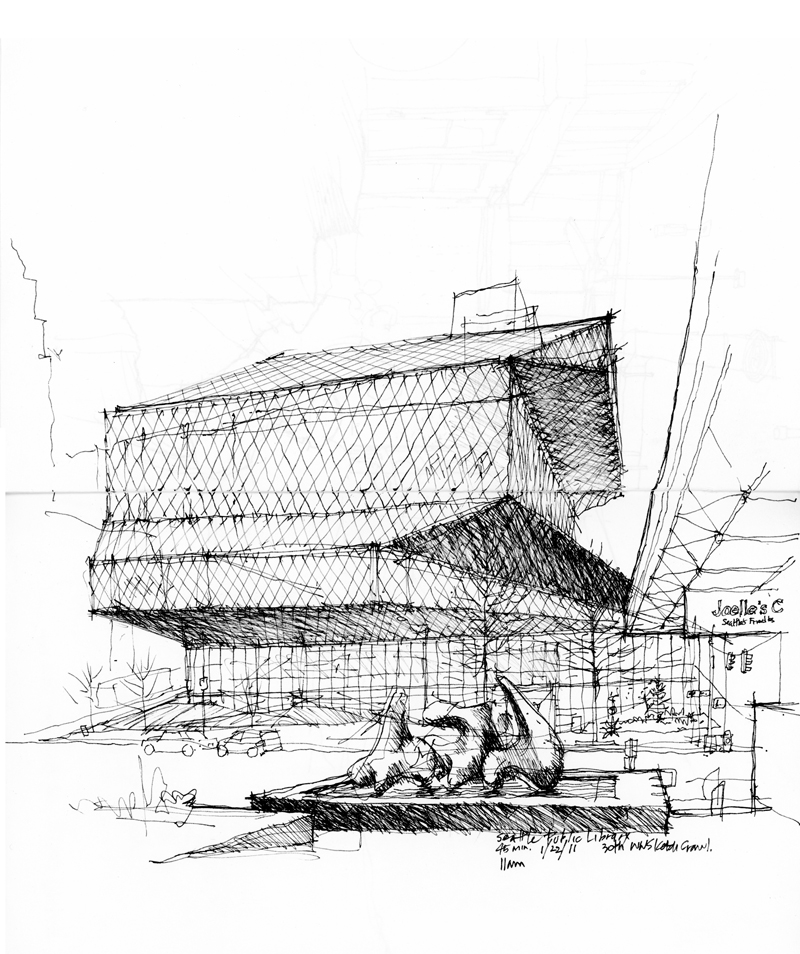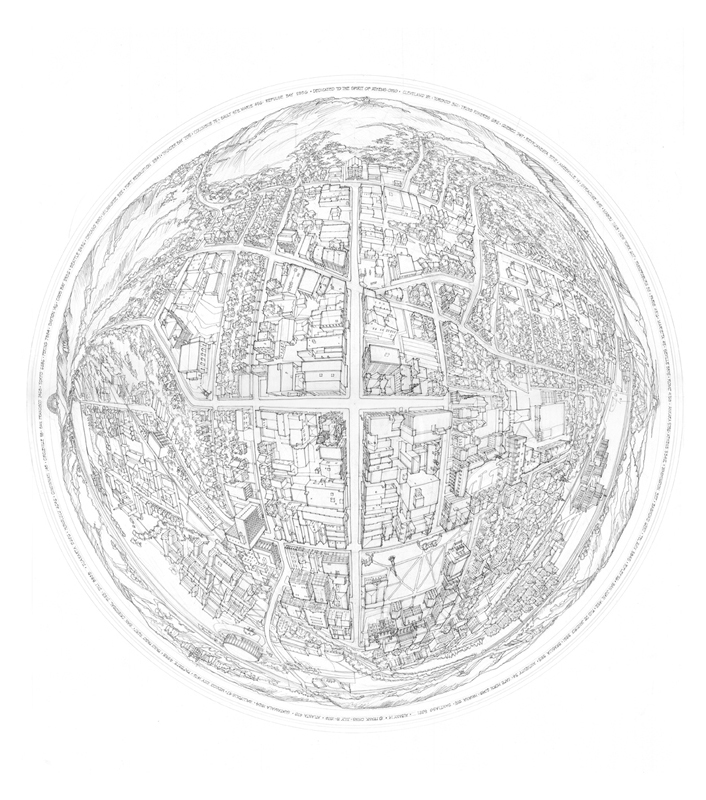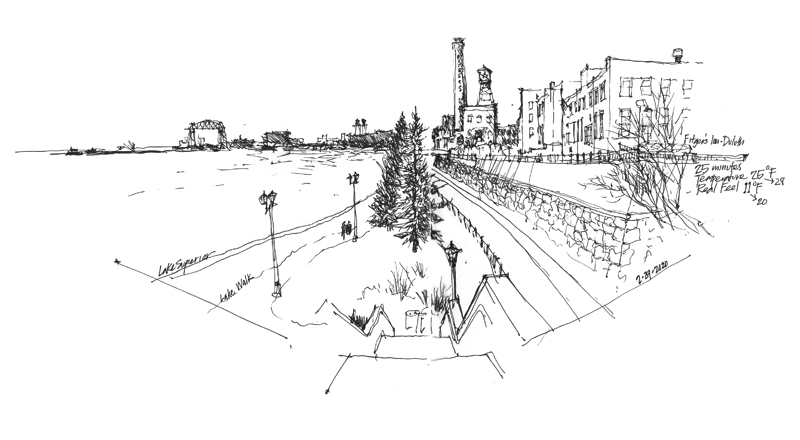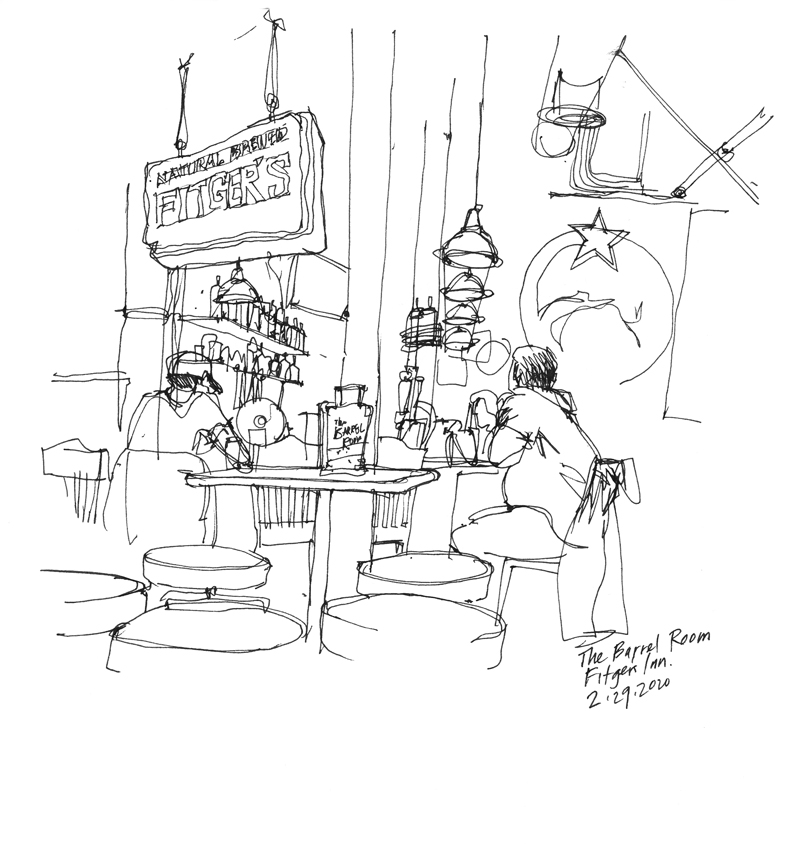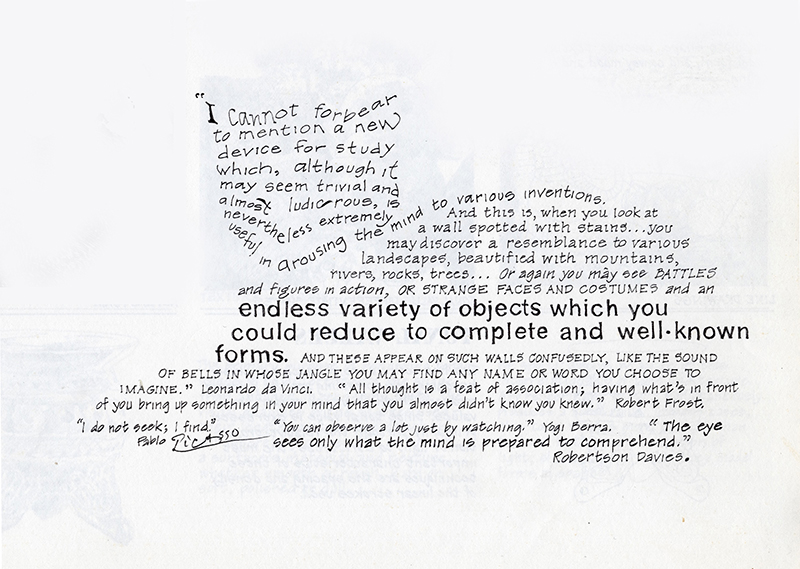
The above image and following quote is from Drawing: A Creative Process.
“Merely looking at an apparently amorphous pattern can sometimes bring to a…searching mind a more specific image. In its search for meaning, the mind’s eye imagines and appears to project familiar images onto seemingly shapeless patterns until it finds a match that makes sense.” This recalls the familiar search for something recognizable when looking up at cloud formations.
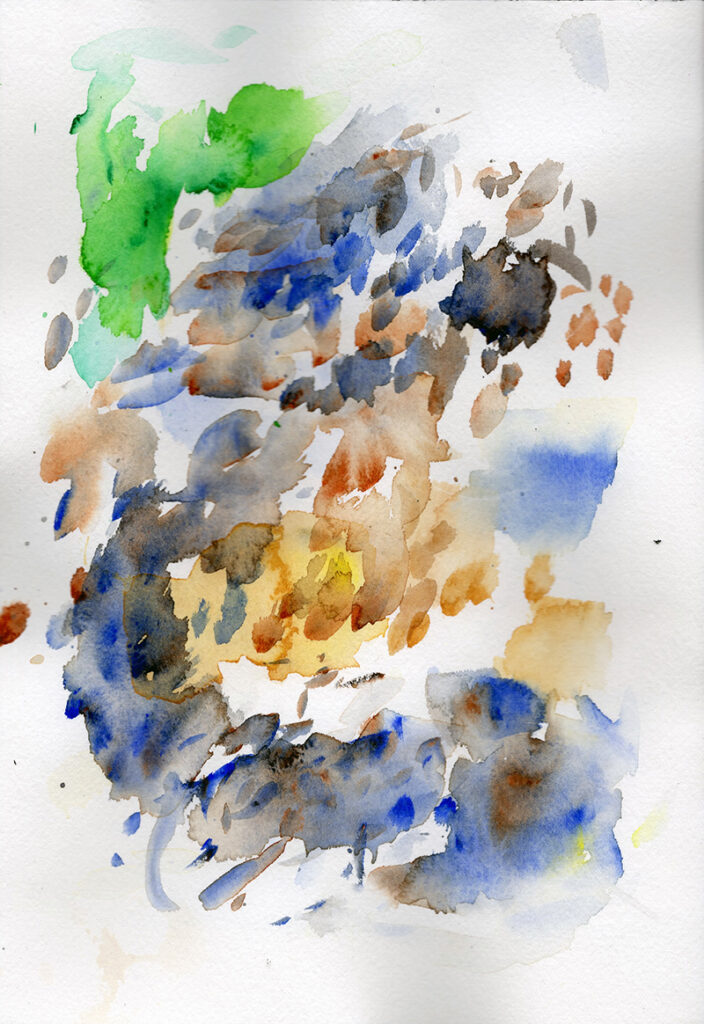
The new year’s image I posted recently used as a backdrop this pattern that developed as I mixed and tested watercolors on a piece of paper. While squinting at that same colorful pattern, I can begin to “see” certain images. The following are two of several possibilities. What else can you see in these patterns?
